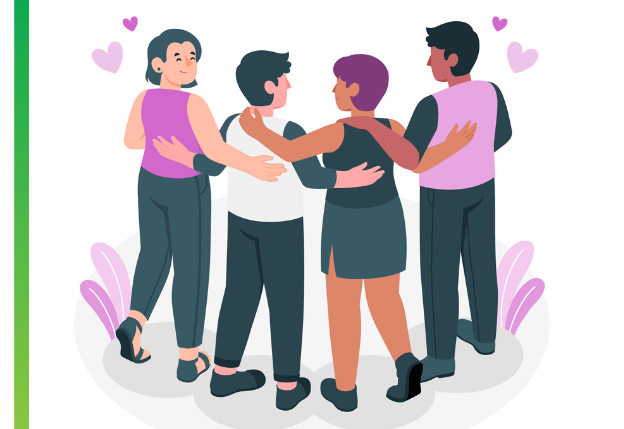
Empathy in Workplace Communication
Communication should build bridges between people, not walls!
I believe walls are erected when communication lacks empathy. Communication is not merely about making others understand your point of view but it’s more about connecting with the people you are talking to.
We often assume that communication is simply talking to someone but NO! Then where does the listening part come in ?
Empathetic communication
When diving into dialogue, remember the cool mantra: first tune in, then throw your thoughts. Easy breezy! So it’s a simple rule that you should follow before you respond or reply – Listen carefully, acknowledge the emotions, avoid advising unless they ask for it, and then you can talk. (Yes, man, this is how you should talk:)

Sometimes, all that people need is to be listened to and hugged. Is it possible via communication? It’s YES! Words can transform into hugs when you talk with warmness and empathy.
- Active listening
- Clarity & conciseness
- Non-verbal cues
- Positive reinforcement
- Tone matters more
Three types of empathy:
Cognitive, Emotional, and Compassionate
- Cognitive Empathy :
It’s empathy with logic & reasoning. Yes, it sounds like the part 2 heading of a competitive exam but it’s not that. It’s when you understand people’s perspectives, thoughts, and motivations through logic and reasoning. Think of it as solving a puzzle in someone else’s mind.
For Example, Your manager recognizes your frustration of missing deadlines with cognitive empathy. He/She analyzes the workload, deadlines & resource availability leading to a revised project plan.

- Emotional Empathy:
You feel what they feel by connecting with their emotional state. It is also known as affective empathy, wherein you share & experience the emotions of others
For example, If a colleague is going through anxiety before a very important presentation, the team leader and the teammates use calming words, to encourage and provide a supportive environment for the colleague to perform better.
- Compassionate Empathy:
This type of empathy doesn’t just stop at understanding but it goes the extra mile to help someone who is struggling. This has a genuine desire to help and lessen the suffering of others. This is a combination of the 1st two types of empathy – Cognitive and emotional.
Example:
A team member notices that a colleague is overwhelmed with tasks. Instead of merely understanding the situation (cognitive empathy) or feeling stressed along with them (emotional empathy), they offer practical help, share the workload, or provide emotional support. Compassionate empathy results in actions that aim to make a positive difference.

What do we gain when there is empathetic communication in the workplace?
Team vibes: Teamwork makes the dream work
I have heard a statement that says “he or she matches my vibe”. So, I believe that the concept of a vibe check comes from empathetic communication. It’s not magic when a group of 4 turns into a beautiful team. The real magic lies in empathetic communication.
Less Drama:
Yes! When the team is so glued then there is no space for drama, Teamwork doesn’t happen overnight, it takes a whole lot of work to form a team and it becomes easier when there is a dash of empathy in everything the people in a team do.
When people understand, care for each other, and communicate with empathy, there’s less room for conflicts. It’s like having an office full of superheroes helping each other and lending a helping hand climbing only upwards.
A positive work culture:
The workspace having a disturbed environment due to sputtering communication, and heavy hanging frustration might turn into a symphonic workplace with a generous dose of empathetic communication. All the grinding machine sounds will turn into a poetic song!
Improved leadership & decision-making:
This is a very vital part of leadership. Leaders who listen and be compassionate are the ones who inspire motivation and loyalty. Employees choose to be loyal & committed when they feel valued, respected, and understood. Loyalty & commitment are as important in a workplace as in a romantic relationship. When the workplace is healthy, everything is transparent and open on the desk and sorted out with clear-cut empathetic communication. Every single decision made by the employer is a reflection of their attitude towards humanity.

Conclusion:
Cultivating various forms of empathy in the workplace enables individuals and teams to establish a more empathetic and compassionate work environment, ultimately contributing to increased job satisfaction and overall success.
Empathetic communication isn’t just a magic potion; it’s a commitment to continuous learning and practice. However, the rewards are undeniable: a thriving workplace culture where individuals and teams flourish, and the organization as a whole reaches its full potential. There is a whole lot of blooming happening!!
So, let’s embark on this journey together, one empathetic conversation at a time, and watch our workplaces transform into vibrant communities of understanding, support, and shared success.
